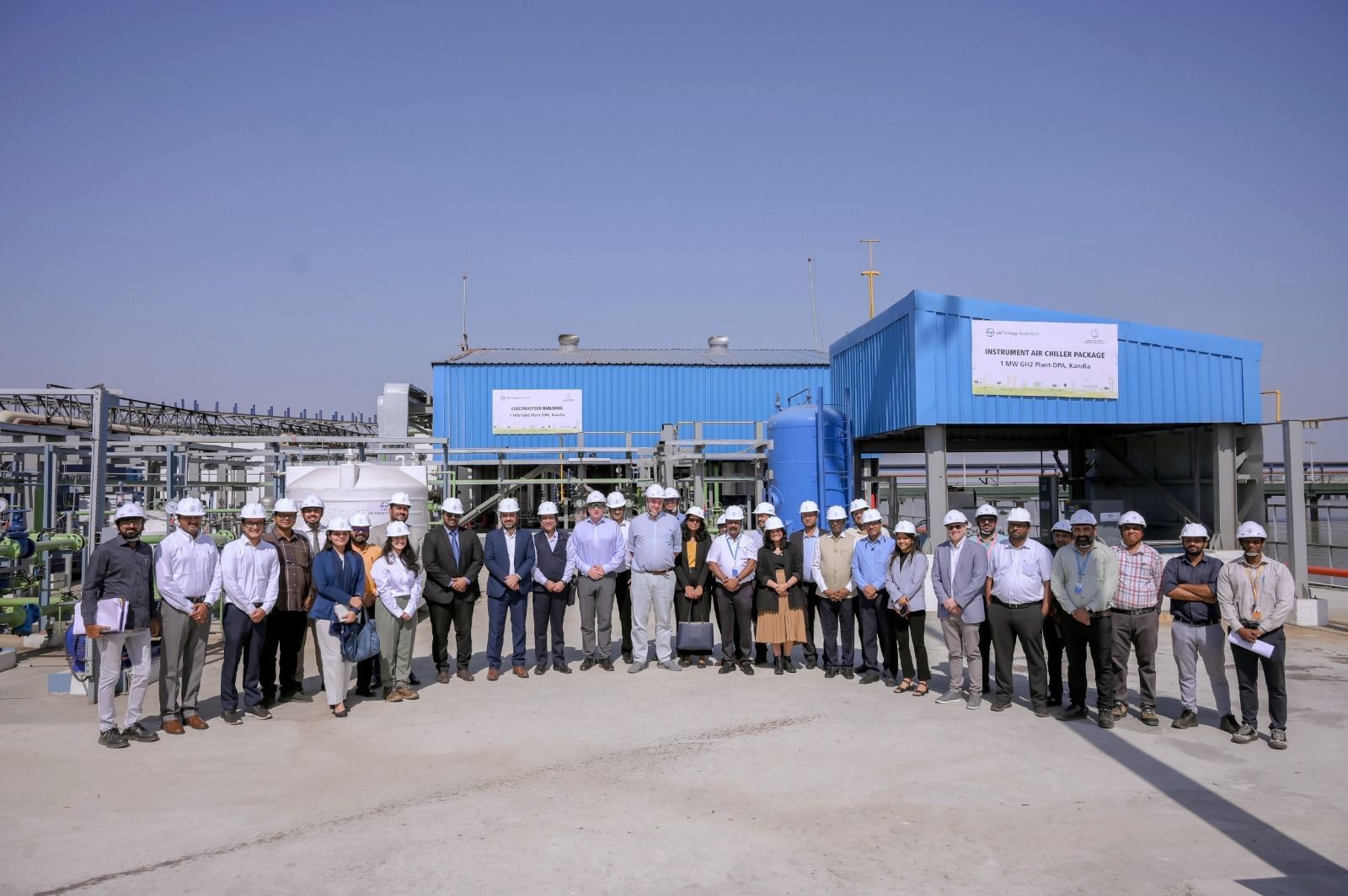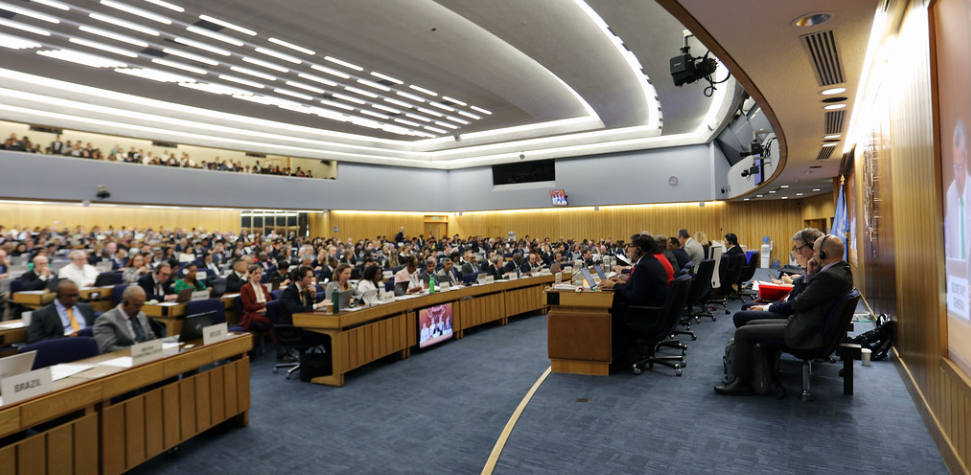India Focuses on Boosting Domestic Shipbuilding: Ports and Shipping Secretary

India is gearing up for a significant leap in its maritime infrastructure as part of its broader plan to become a global economic powerhouse. The country is laying the groundwork to emerge as a leading player in the shipping industry by 2030, an essential aspect of its goal to establish itself as the third-largest economy in the world. According to T.K. Ramachandran, the Secretary of Shipping, Port, and Waterways, India is focused on building ships domestically and setting up allied facilities, aiming to reduce its reliance on foreign resources and transform itself into a hub for maritime activities.
Speaking at a recent event organized by the V.O. Chidambaranar Port Authority in Tuticorin, Mr. Ramachandran highlighted the efforts being made to establish a robust maritime ecosystem in the country. “We are actively working on creating an ecosystem here to transform India into a centre of shipping industry facilities,” he said. This includes shipbuilding, repair, flagging, and arbitration, allowing the country to handle these key aspects independently.
The event marked the inauguration of the 9th berth at the port, which has now been converted into the Tuticorin International Container Terminal. This new terminal is a significant addition to India’s port infrastructure, and Mr. Ramachandran emphasized that this is just the beginning of India’s journey toward maritime leadership. India has its sights set on becoming a $55 trillion economy by 2047 and is planning substantial investments in its maritime sector to reach this milestone.
Major Investments and New Ports
India’s ambitious maritime goals will be supported by investments of over ₹80 lakh crore in the coming decades. As part of this vision, the government is exploring the construction of new major and minor ports across the country. One of the most notable developments is a new port coming up at Vadhvan in Maharashtra. This port is set to be a deep-draft facility, capable of handling large container ships, bulk cargo, and crude oil tankers. Once completed, it will become a critical hub for maritime trade, enabling India to increase its capacity to handle global shipping demands.
In addition, another major seaport is being planned in the Andaman and Nicobar Islands. This port will have an impressive capacity to handle 16 million containers annually once fully developed. The first phase of this project, which is expected to cost ₹18,000 crore, is scheduled to be commissioned by 2028. Following the completion of this phase, the port will initially handle around 4 million containers, with further expansion planned to meet future needs.
“With these whopping investments and construction of new ports, India’s maritime infrastructure would take the country to the elite club of world’s maritime leaders,” Mr. Ramachandran said, emphasizing how these projects will position India as a key player in global shipping and trade.
Collaboration with Coastal States
One of the key factors contributing to India’s maritime success is the cooperation between the central government and coastal states. States such as Kerala, Andhra Pradesh, Odisha, Maharashtra, and Tamil Nadu have been instrumental in facilitating the creation of modern maritime infrastructure. Mr. Ramachandran lauded these states for their collaboration, which has made it possible to develop state-of-the-art facilities along India’s vast coastline.
The Tuticorin International Container Terminal is one such facility that exemplifies this collaborative effort. During the event, Prime Minister Narendra Modi, in a pre-recorded video message, praised the timely completion of the project, which was inaugurated ahead of its original 12-month schedule. The terminal boasts a 300-meter-long berth and a 14.20-meter draft, allowing it to handle larger container vessels. This development will significantly boost the capacity of the V.O. Chidambaranar Port, enhancing its role in global trade.
Economic Impact
Union Minister for Shipping, Ports, and Waterways Sarbananda Sonowal, who attended the event, highlighted the economic benefits of the new container terminal. The terminal, which was built at a cost of ₹434.17 crore through a 30-year concession agreement with J.M. Baxi Ports and Logistics, will enable direct mainline connectivity for exporters. This means that goods can be shipped directly from Tuticorin to international destinations without the need for transhipment, saving exporters significant costs.
The new facility, which has a workforce composed of 40% women, is expected to handle 600,000 containers annually. Once the planned outer harbor development, which involves an investment of ₹7,000 crore, is completed, the terminal’s capacity will increase to 6 million containers per year. Additionally, by avoiding transhipment, exporters are expected to save approximately ₹16,500 per container, further boosting the economic efficiency of India’s maritime trade.
The geographic location of the Tuticorin port gives it a strategic advantage in global maritime logistics, and the infrastructure upgrades being carried out will help transform it into one of the world’s leading logistics hubs.
Focus on Green Energy
In keeping with global trends, India is also focusing on integrating sustainable energy solutions into its maritime sector. The V.O. Chidambaranar Port, under the leadership of Chairman Susanta Kumar Purohit, has already become a 100% green port, using electricity generated from solar panels. Plans are underway to further enhance the port’s sustainability credentials by installing 500 MW offshore windmills, a project that has already received approval from the Ministry of Shipping.
Moreover, the upcoming green hydrogen hub project within the port area is expected to elevate the port’s status in the global maritime industry. These initiatives align with India’s broader commitment to reducing carbon emissions and promoting renewable energy sources.
A Step Toward Maritime Leadership
The developments in Tuticorin are just a small part of India’s broader push to become a maritime leader. With substantial investments in ports, shipbuilding facilities, and green energy, India is positioning itself to play a pivotal role in global shipping and trade. The country’s growing maritime infrastructure, supported by collaboration between the central government and coastal states, is expected to propel India into the elite club of maritime leaders by 2030.
The dedication of the Tuticorin International Container Terminal marks a key milestone in India’s maritime journey, setting the stage for future growth and development in this critical sector.
Author: shipping inbox
shipping and maritime related web portal








